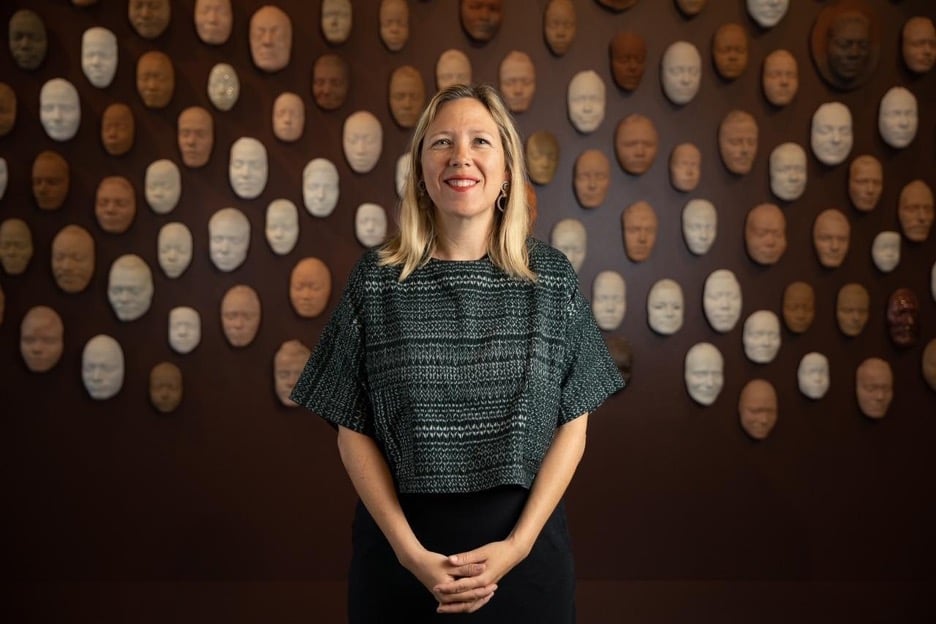It is fitting that the opening of “The Faces of Ruth Asawa” at the Cantor Arts Center on July 6 coincided with the arrival of a new face for the museum’s leadership.
Rewind two years: In 2020, an article in The Daily revealed a challenging work environment at the Cantor Arts Center. In that year alone, 25% of the staff left the museum, reducing the total workforce to only 40 people. Those who remained felt overwhelmed by the demanding work. One former employee said that they “cannot emphasize enough that the timelines that they had us working on were not museum-standard.”
Last April, the University announced its decision to hire Veronica Roberts as the John and Jill Freidenrich Director at the Cantor Arts Center. Since then, Roberts — who brings a wealth of experience to the role — has been righting the ship and transforming the museum’s culture.
Roberts credits her grandmother, a former Stanford Museum docent, for instilling her love of the arts over the years.
“She was really my art travel companion and what I remember most was going through the galleries together and just her love of Rodin,” Roberts said. “We would always hear about Al Elsen as if he was like a relative… [He was] the Stanford faculty member who was responsible for the building of the Rodin collection.”
A San Francisco local, Roberts enjoyed living in such an artistic community. Growing up, she spent a lot of time visiting numerous museums and watching plays. She felt it was a gift to be raised in such a cosmopolitan city that allowed her to enjoy world-class art and culture.
Roberts recognizes the legacy challenges facing The Cantor Arts Center: “I think it’s been a rocky few years at the museum, there’s been a lot of turnover, and it’s been hard for everyone with the pandemic. So, I’m also eager to create a positive work environment for everyone.”
Hiring full-time staff is a priority at this early stage of her tenure. She feels the museum should fill open positions because “we can’t dream too big until we have a few more feet on the ground.” Currently, Cantor is interviewing for the Director of Academic and Public Programs, as well as the Director of Marketing and Communication.
Jamil Hellu, an artist and Photographer Lecturer in the Art and Art History Department, met Roberts before she started the new role.
“It was one of the most memorable and inspiring studio visits I’ve ever had,” Hellu said. “She is extraordinarily insightful and shares enlightening perspectives about art with a great sense of ease and generosity while being meticulously curious and diligent.”
Roberts stated that one reason she took the position was her excitement for Stanford’s Asian American Art Initiative (AAAI) and her admiration for AAAI Co-directors Aleesa Pitchamarn Alexander and Marci Kwon. “It’s bigger than shows and acquisitions,” said Roberts, citing her desire to move the field as a whole forward. “It’s also about research and scholarship.”
Kwon, an assistant professor of art history, is optimistic about the museum’s direction as she looks to the future. The AAAI plans to “continue to generate exhibitions and publications about Asian American artists that will expand and transform our knowledge about their work,” she said. They will also keep fostering ties with Asian American communities across the Bay Area, she added.
Creating more diversity in the Cantor collections is another important priority: Kwon said that her classes will utilize the full scope of the museums’ offerings. She also explains, “Art history is best learned in front of our objects of study, but this can be a struggle with historically underrepresented artists.” She added, “Under Veronica’s leadership, the Cantor will become a hub of interdisciplinary inquiry where students and faculty from a variety of backgrounds and disciplines can learn.”
Roberts sees opportunities to expand diversity at the museum, too. “I think women are still so underrepresented in collections in general. So I do think that that’s an area that needs so much more love and attention. It’s going to take a long time to kind of right that ship,” she said.
The new arrivals also include Deborah Cullinan, who was recently tapped to serve as vice president for the arts. The recent hires are “beyond exciting” for the arts at Stanford, Alexander said. “With them on board, we are entering a new era, where the arts will occupy an even more central and vital role on campus and the community at large.”
